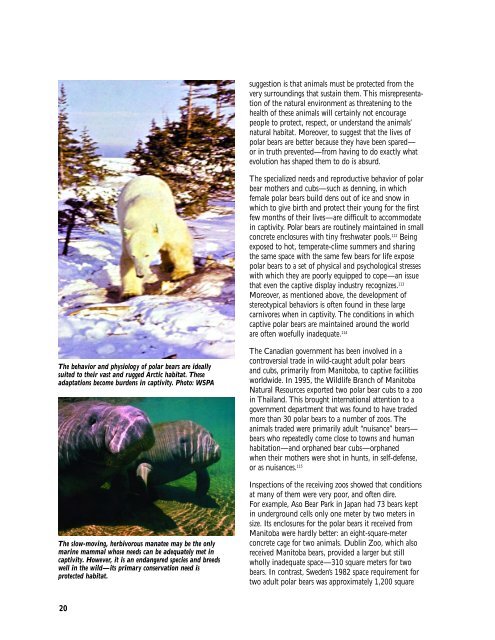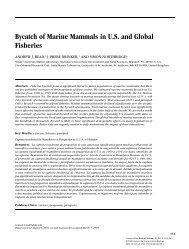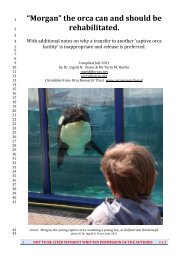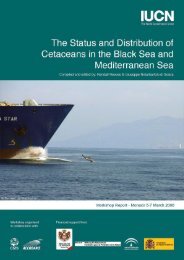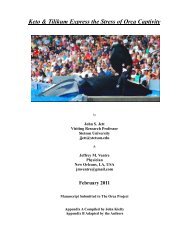CaseAgainstMMCapt.#74 final - Marine Connection
CaseAgainstMMCapt.#74 final - Marine Connection
CaseAgainstMMCapt.#74 final - Marine Connection
You also want an ePaper? Increase the reach of your titles
YUMPU automatically turns print PDFs into web optimized ePapers that Google loves.
suggestion is that animals must be protected from the<br />
very surroundings that sustain them. This misrepresentation<br />
of the natural environment as threatening to the<br />
health of these animals will certainly not encourage<br />
people to protect, respect, or understand the animals’<br />
natural habitat. Moreover, to suggest that the lives of<br />
polar bears are better because they have been spared—<br />
or in truth prevented—from having to do exactly what<br />
evolution has shaped them to do is absurd.<br />
The specialized needs and reproductive behavior of polar<br />
bear mothers and cubs—such as denning, in which<br />
female polar bears build dens out of ice and snow in<br />
which to give birth and protect their young for the first<br />
few months of their lives—are difficult to accommodate<br />
in captivity. Polar bears are routinely maintained in small<br />
concrete enclosures with tiny freshwater pools. 112 Being<br />
exposed to hot, temperate-clime summers and sharing<br />
the same space with the same few bears for life expose<br />
polar bears to a set of physical and psychological stresses<br />
with which they are poorly equipped to cope—an issue<br />
that even the captive display industry recognizes. 113<br />
Moreover, as mentioned above, the development of<br />
stereotypical behaviors is often found in these large<br />
carnivores when in captivity. The conditions in which<br />
captive polar bears are maintained around the world<br />
are often woefully inadequate. 114<br />
The behavior and physiology of polar bears are ideally<br />
suited to their vast and rugged Arctic habitat. These<br />
adaptations become burdens in captivity. Photo: WSPA<br />
The slow-moving, herbivorous manatee may be the only<br />
marine mammal whose needs can be adequately met in<br />
captivity. However, it is an endangered species and breeds<br />
well in the wild—its primary conservation need is<br />
protected habitat.<br />
The Canadian government has been involved in a<br />
controversial trade in wild-caught adult polar bears<br />
and cubs, primarily from Manitoba, to captive facilities<br />
worldwide. In 1995, the Wildlife Branch of Manitoba<br />
Natural Resources exported two polar bear cubs to a zoo<br />
in Thailand. This brought international attention to a<br />
government department that was found to have traded<br />
more than 30 polar bears to a number of zoos. The<br />
animals traded were primarily adult “nuisance” bears—<br />
bears who repeatedly come close to towns and human<br />
habitation—and orphaned bear cubs—orphaned<br />
when their mothers were shot in hunts, in self-defense,<br />
or as nuisances. 115<br />
Inspections of the receiving zoos showed that conditions<br />
at many of them were very poor, and often dire.<br />
For example, Aso Bear Park in Japan had 73 bears kept<br />
in underground cells only one meter by two meters in<br />
size. Its enclosures for the polar bears it received from<br />
Manitoba were hardly better: an eight-square-meter<br />
concrete cage for two animals. Dublin Zoo, which also<br />
received Manitoba bears, provided a larger but still<br />
wholly inadequate space—310 square meters for two<br />
bears. In contrast, Sweden’s 1982 space requirement for<br />
two adult polar bears was approximately 1,200 square<br />
20


